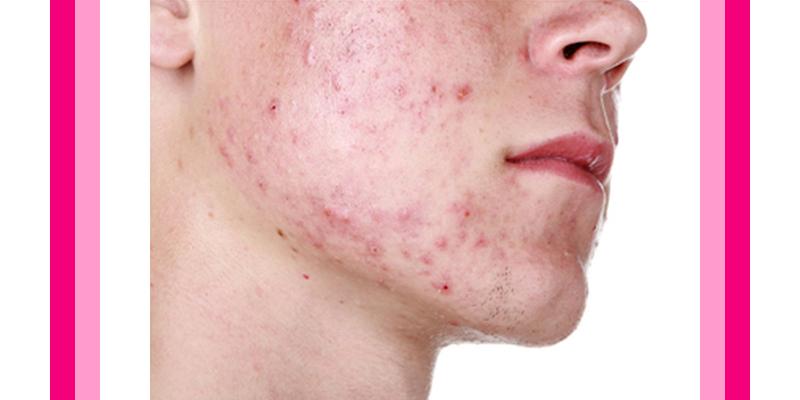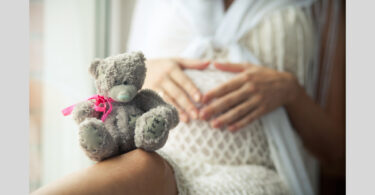This is a condition of excessive sebum secretion by which obstructing horny plugs (comedones) develop, associated with inflammation of the pilosebaceous duct. It is the commonest skin disorder. About 70% of the population have experienced it in some phase of their life.
Acne vulgaris is most common between the ages of 12 and 20. It often begins around 10-13 years of age, lasts 5-10 years and usually resolves by age 20-25.
KEYWORDS– Acne Vulgaris, Comedones, Pustules, Cysts, Keratinous
INTRODUCTION [2]
Acne Vulgaris is a self- limited disorder primarily of teenagers and young adults, although perhaps 10 to 20% of adults may continue to experience some form of the disorder. The key factor for the expression of the disease in adolescence is the increase in sebum production by sebaceous glands after puberty.
Small cysts called comedones, form in hair follicles due to blockage of the follicular orifice by retention of sebum and keratinous material. The activity of bacteria (proprionobacterium acnes) within the comedones releases free fatty acids from sebum, causes inflammation within the cyst, and results in rupture of the cyst wall. An inflammatory foreign body reaction develops as a result of extrusion of oily and keratinous debris from the cyst.
TYPES [4]
- Acne excoriee
- Drug Induced Acne/ Acneiform eruptions
- Endocrine Acne
- Externally Induced Acne – the various types are:
-Cosmetic Acne
-Pomade Acne
-Occupational Acne
-Chloracne
-Mechanical Acne syn. Acne Mechanica
-Detergent Acne
-Tropical Acne
-Infantile and Juvenile Acne
-Acne in the Aged
- Severe varieties of acne are: Acne Conglobata, Acne Fulminans, Gram-negative Folliculitis, Pyoderma Faciale
AETIOLOGY [3]
- Seborrhoeic diathesis
- Familial disposition is common
- Hormonal: -During Puberty, Menstrual irregularity, Contraceptive Pills (especially Progesterone)
- Iatrogenic- A.C.T.H., Corticosteroids, Androgens, Aggravated by bromides and iodides.
- Occupation- Oily, greasy preoccupations.
- Predisposing Causes- Anaemia, Diet rich in fat, starches, Excessive use of greasy cosmetics, sedentary life, Intestinal stasis (Constipation)
Other causes of acne may include:
-Conditions such as polycystic ovarian syndrome and Cushing’s syndrome
-Oily cosmetic products medicines, such as anabolic steroids, steroid creams and ointments, and lithium.
-There’s a chance that acne can run in families. For example, if both parents had acne you have an increased chance of having it too.
CLINICAL FEATURE [2]
–Open Comedones also known as blackheads (black spots the size of a pin head) which rarely result in inflammatory acne lesions, have a large dilated follicular orifice and are filled with easily expressible oxidized, darkened, oily debris.
–Closed Comedones also known as whiteheads (white spots similar to black heads) which appears as 1-2 mm pebbly white papules, which are accentuated when the skin is stretched. They are precursors of inflammatory lesions of acne vulgaris. Contents of whiteheads are not easily expressed.
–Pustules (small pus-filled lesions).
-Redness and inflammation around eruptions.
-If acne is severe, cysts (larger, firm swellings in the skin and abscesses (swollen, inflamed, tender area of infection containing pus)
INVESTIGATIONS [1]
-The vast majority of patients with acne do not require investigations
-Secondary causes and suspected underlying endocrine disease should be investigated.
-There is often a family history in patients who have biochemical evidence of hyper androgenism
-Test for serum levels of 17-hydroxyprogesterone levels in the follicular phase around 9am.
-Patients suspected of having a more serious underlying endocrinopathy, including those found to have a testosterone level greater than 5 nmol/l, or with other features of virilisation, should be referred urgently to an endocrinologist. Such cases are very rare.
COMPLICATIONS[2][3]
Acne scarring:
Acne scarring can sometimes develop as a complication of acne when the most serious types of spots, nodules and cysts, rupture (burst) damaging nearby skin.
Scarring can also occur if you pick or squeeze your spots, so it is important to avoid doing this.
There are three main types of acne scars:
- Ice-pick scars: small, deep holes in the surface of your skin that look like the skin has been punctured with a sharp object.
- Rolling scars: caused by bands of scar tissue that form under the skin giving the surface of the skin a rolling and uneven appearance.
- Boxcar scars: round or oval depressions, or craters, in the skin.
Depression:
Acne can often cause intense feelings of anxiety and stress, which can sometimes make people with the condition become socially withdrawn. This combination of factors can lead to those with acne becoming depressed.
Anxiety:
Anxiety is an unpleasant feeling when you feel worried, uneasy or distressed about something that may or may not be about to happen.
Depression:
Depression is when you have feelings of extreme sadness, despair or inadequacy that last for a long time
MANAGEMENT [3]
-Reassuarance
-Adequate rest, sleep, relaxation.
-Mild exercise, more exposure to open fresh air.
-Diet:- Avoid fats, carbohydrates, sweets, chocolates, tea, coffee, ice creams, pickles, alcohol, soft drinks
:Take fresh juicy fruits, vegetables, proteins
:Avoid eating food that causes constipation.
-Wash face with non-irritant mild soap and water at least twice a day.
-Avoid greasy cosmetics.
-Steaming of face twice a week.
-DO NOT pick acne, cut nails short.
HOMOEOPATHIC VIEWPOINT [4]
Acne vulgaris can be considered as one of the common diagnoses brought forward by the patient to a homoeopath. The problem should never be tackled with superficial, local acting remedies. Instead, deep acting constitutional remedies should be prescribed judiciously as soon as the complete totality is available.
HOMOEOPATHIC TREATMENT [5-9]
1. Sulphur
A very common remedy, especially for chronic acne. Rough and hard skin. Acne associated with comedones and constipation. Acne that aggravates with water. Pale, sickly colour of the skin. Spotted redness of face with black pores. Itching intensely in the evening and from warmth
2. Kali bromatum
General failure of mental power, melancholy, loss of memory. Fidgety, fear of being poisoned, night terrors. Suicidal, numb feeling in the head. Vomiting with intense thirst after every meal. Diabetic. Exaggerated sexual desire in women; sexual excitement during partial slumber in men.
3. Antimonium Crudum
Small red pimples in the face. Excessive irritability and fretfulness. Thickly coated white tongue. Condition aggravated by heat and cold bathing. Loss of appetite; desire for acidic foods and pickles. Arthritic pain in fingers. Continual drowsiness in old people.
4. Natrum Muriaticum
Good remedy for acne, remedy acts on sebaceous glands. Dry mucous membranes. Great weakness and weariness. In people with hyperthyroidism, goiter, diabetes, Addison’s disease. Irritable, awkward, hasty, wants to be left alone, cries a lot. Depression, especially due to chronic disease. Shortness of breath, flow of tears with cough. Greasy oily skin. Nervous jerking with sleep
5. Asteria Rubens
Indicated for flabby, lymphatic constitution; also indicated in people with breast cancer. Disposition to pimples at adolescence. Red face; pimples on side of nose, chin and mouth. Axillary glands swollen, hard and knotty. Symptoms worsen with coffee, at night, or cold damp weather
6. Belladonna
Indicated in acne rosacea. Alternate redness and paleness of skin. Dry, hot and swollen skin. Restlessness; talks fast. Acuteness of all senses
7. Nux vomica
Typical remedy for rather thin, quick, active, nervous and irritable persons. Easily chilled; sensitive to all impressions. Don’t want to be touched. Yellowish about nose, mouth or eyes
8. Graphites
Cobweb like sensation on the face. Oozy and itching pimples. Dry hard rough skin (face). Symptoms worse with warmth, before and after periods. Symptom relief in a dark room
9. Bovista
Indicated for acne from the use of cosmetics, especially in summers. Itchy skin especially in warm conditions. Pale swelling of cheeks. Restless, sad, easily offended.
10.Carbo Vegetablis
The need for Carbo veg is indicated by pimples with mottled cheeks and a red nose. The pimples may suppurate, exhibit an offensive odour, and may develop into carbuncles. The skin is moist and itchy and weakness and flatulence may be seen in those requiring this remedy. Symptoms are worse for warmth and rich food.
11.Hepar Sulphuricum
This remedy is applicable in adolescents with unhealthy skin suffering from acne, where sensitive, painful pimples are present. The pimples are small (or often pea-shaped) and may suppurate with white pus. They bleed easily and may ulcerate if scratched or injured. Lesions appear more frequently on the forehead and/or lips. Symptoms are improved by damp weather and aggravated by washing or touch.
12. Pulsatilla Nigricans
Those acne sufferers who respond to this remedy are often adolescents who are thirst less and have menstrual disorders, circulatory problems, allergies or ear, nose or throat disorders. The acne lesions themselves may be itchy and have a slightly cyanotic appearance. Symptoms are worse for heat, rich, starchy or fatty foods or ice-cream.
13. Sepia Officinalis
Sepia types may develop acne during pregnancy or after the birth of their child. The acne may co-exist with menstrual disorders. The acne lesions are often yellow tinged pimples appearing on the face and especially on the chin. The condition is improved after the cessation of menses and worse before menses and from breastfeeding.
14. Silica Terra
The acne that responds well to this remedy consists of hard, deep pimples that fail to show pus or come to a head. The lesions commonly arise on the cheeks and forehead and then resolve, leaving a pitting scar. Associated lymph glands may be swollen and the sufferer may have a history of boils and various forms of nail pathology.
15. Thuja Occidentalis
The Thuja patient will usually exhibit very oily skin, dilated pores, and express feelings of great shame in regard to their acne. The lesions themselves often have sunken centres and appear commonly on the forehead, upper lip and adjacent to the nose. Symptoms are worse during menses.
REFERENCES
- Davidson principles and practice of medicine- 23rd edition . 1242,1243
- Harrison’s principles of international medicine- 19th edition (Vol- 2). 294,295
- Homoeopathic Principles and Practice Of Medicine; 2016, 9th edition-Dr. V.K. Chauhan, MD, Dr. Meeta Gupta. 846,847
- SKIN; Homoeopathic Approach to DERMATOLOGY, Second Revised Edition, Dr. Farokh J. Master.658, 664,669
- Boericke’s New Manual of Homeopathic MATERIA MEDICA with Repertory
- Allen’s Keynotes – rearranged and classified with Leading Remedies of the Materia Medica with Bowel Nosodes.
- Lectures on Homeopathic Materia Medica – T. Kent, together with Kent’s ‘New Remedies’ incorporated and arranged in alphabetical order
- Lotus MATERIA MEDICA by Robin Murphy – 3rd edition
- Homeopathic Therapeutics – The Classical Therapeutic Hints – Samuel Lilienthal, M.D.





Very precious writing. Keep writing. May God bless you.